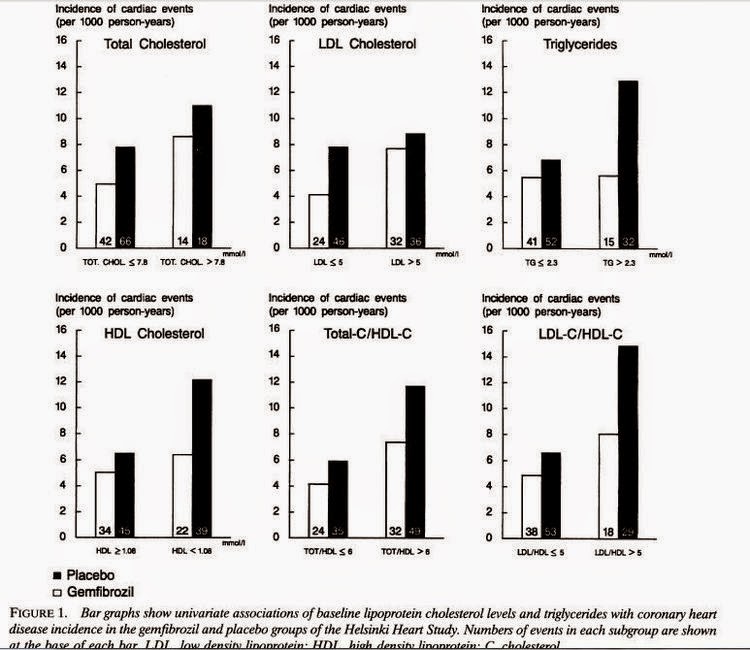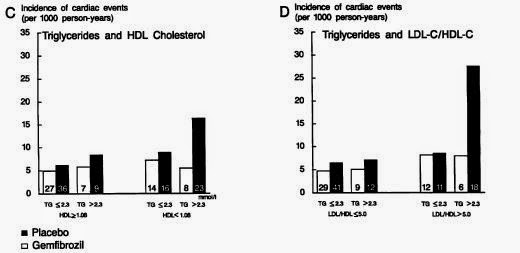Contraindications for
Ketogenic and Very Low Carbohydrate Diets
This list of medical conditions which may cause adverse
reactions to ketogenic diets or fasting may not be complete and is intended to
be updated as necessary.
Acute Intermittent
Porphyria and Acute Variegate Porphyria
The possibility of uncovering undiagnosed cases of these
related disorders should always be borne in mind by those prescribing or
experimenting with carbohydrate-restricted diets or fasting.
Acute Intermittent Porphyria (AIP) - Genetic disorder of
incomplete heme synthesis due to deficiency of porphobilinogen deaminase with
incidence 5-10 per 100,000.
Acute Variegated
Porphyria (AVP) - Genetic disorder reducing heme synthesis by 50% due to
mutation of protoporphyrinogen oxidase, with incidence 1 in 300 (South Africa)
to 1 in 75,000 (Finland).
True incidence may be greater as some cases are only
diagnosed when triggered by low-carbohydrate diets or fasting.
- Some new cases of AIP and AVP were diagnosed at the height
of Atkins diet popularity in the 1970s and this can be expected to recur during
current popularity of LCHF diets.[1]
Symptoms may include:
Abdominal pain which is severe and poorly localized (most
common, 95% of patients experience)
Urinary symptoms (Dysuria, urinary retention/incontinence or dark urine)
(Note: urine turning dark after exposure to sunlight or UV light is useful diagnostic sign)
Peripheral neuropathy (patchy numbness and paresthesias)
Proximal motor weakness (usually starting in upper extremities which can progress to include respiratory impairment and death)
Autonomic nervous system involvement (circulating catecholamine levels are increased, may see tachycardia, hypertension, sweating, restlessness and tremor)
Neuropsychiatric symptoms (anxiety, agitation, hallucination, hysteria, delirium, depression)
Electrolyte abnormalities (Hyponatremia may be due to hypothalamic involvement leading to SIADH that may lead to seizures).
AIP can also present as acute pancreatitis [2, 3, 4]
Urinary symptoms (Dysuria, urinary retention/incontinence or dark urine)
(Note: urine turning dark after exposure to sunlight or UV light is useful diagnostic sign)
Peripheral neuropathy (patchy numbness and paresthesias)
Proximal motor weakness (usually starting in upper extremities which can progress to include respiratory impairment and death)
Autonomic nervous system involvement (circulating catecholamine levels are increased, may see tachycardia, hypertension, sweating, restlessness and tremor)
Neuropsychiatric symptoms (anxiety, agitation, hallucination, hysteria, delirium, depression)
Electrolyte abnormalities (Hyponatremia may be due to hypothalamic involvement leading to SIADH that may lead to seizures).
AIP can also present as acute pancreatitis [2, 3, 4]
Rash is not typically seen in AIP, but in AVP skin can be
overly sensitive to sunlight. Areas of skin exposed to the sun develop severe
blistering, scarring, changes in pigmentation, and increased hair growth.
Exposed skin becomes fragile and is easily damaged.
Patients with acute porphyrias are commonly misdiagnosed
with psychiatric diseases. Subsequent treatment with anti-psychotics increases
the accumulation of porphobilinogen, thus aggravating the disease enough that
it may prove fatal.
10% glucose infusion or high-carbohydrate diet used in
treatment. Hematin and heme arginate can shorten attacks and reduce the
intensity of an attack but are not without side effects [5]
Carbohydrate restriction is not a factor in the common
porphyria, porphyria cutanea tarda.
Question: does dietary heme as well as dietary glucose play a protective role in AIP and AVP?
[Edit: a first hand account of what it is like to have an undiagnosed porphyria - http://ahha.org/articles.asp?Id=119
Note it can be triggered by many common diet components including in this case corn fed to animals.
Beta carotene is an effective treatment for photosensitivity of acute variegate porphyria -
http://www.rarediseasesnetwork.org/porphyrias/patients/treatment/index.htm ]
Systemic primary
carnitine deficiency (SPCD) [6]
This syndrome, and others below, is almost certain to be
diagnosed in infancy.
- also known as carnitine uptake defect, carnitine
transporter deficiency (CTD) or systemic carnitine deficiency
- an inborn error of fatty acid transport caused by a defect
in the transporter responsible for moving carnitine across the plasma membrane.
- can be treated with high-dose l-carnitine supplementation
- although it is usually thought that MCTs do not require
carnitine transport for beta-oxidation, tests with affected individuals have
shown that MCTs are poorly metabolised in SPCD [7]
- Incidence: 1 per 100,000 except in Faroe Islands 1 per
1,000.
Other disorders that
impair fatty acid oxidation and ketogenesis
A person with one of these disorders will have impaired
metabolism of fatty acids when fasting, and will not produce ketones. Unless
the condition is one treatable with l-carnitine, they may require a low-fat,
high-carbohydrate diet.
Paradoxically a CPT1A defect is highly preserved in Arctic
populations who evolved on a high-fat diet – this mutation suppresses ketosis
and instead increases gluconeogenesis and heat generated from uncoupled fatty
acid oxidation.[8] The population of the
Faroe Islands also traditionally ate a low-carbohydrate, high seafood diet;
this would seem to suggest that CPT1A and perhaps SPCD defects are not true
contraindications for such a diet.
Incomplete list of various fatty-acid metabolism disorders
[9]
Carnitine Transporter Defect
Carnitine-Acylcarnitine Translocase (CACT) Deficiency
Carnitine Palmitoyl Transferase I & II (CPT I & II) Deficiency
2,4 Dienoyl-CoA Reductase Deficiency
Electron Transfer Flavoprotein (ETF) Dehydrogenase Deficiency (GAII & MADD)
3-Hydroxy-3 Methylglutaryl-CoA Lyase (HMG) Deficiency
Very long-chain acyl-coenzyme A dehydrogenase deficiency (VLCAD deficiency)
Long-chain 3-hydroxyacyl-coenzyme A dehydrogenase deficiency (LCHAD deficiency)
Medium-chain acyl-coenzyme A dehydrogenase deficiency (MCAD deficiency)
Short-chain acyl-coenzyme A dehydrogenase deficiency (SCAD deficiency)
3-hydroxyacyl-coenzyme A dehydrogenase deficiency (M/SCHAD deficiency)
Carnitine-Acylcarnitine Translocase (CACT) Deficiency
Carnitine Palmitoyl Transferase I & II (CPT I & II) Deficiency
2,4 Dienoyl-CoA Reductase Deficiency
Electron Transfer Flavoprotein (ETF) Dehydrogenase Deficiency (GAII & MADD)
3-Hydroxy-3 Methylglutaryl-CoA Lyase (HMG) Deficiency
Very long-chain acyl-coenzyme A dehydrogenase deficiency (VLCAD deficiency)
Long-chain 3-hydroxyacyl-coenzyme A dehydrogenase deficiency (LCHAD deficiency)
Medium-chain acyl-coenzyme A dehydrogenase deficiency (MCAD deficiency)
Short-chain acyl-coenzyme A dehydrogenase deficiency (SCAD deficiency)
3-hydroxyacyl-coenzyme A dehydrogenase deficiency (M/SCHAD deficiency)
“Inborn errors in the enzymes involved in lipid metabolism:
from mitochondrial membrane long-chain fatty acids transport mechanism to
beta-oxidation and Krebs cycle could be potentially fatal during fasting or
KDs. Thus, carnitine deficiency, carnitine palmitoyltransferase (CPT) I or II
deficiency, carnitine translocase deficiency, b-oxidation defects, or pyruvate
carboxylase deficiency should be screened before initiating the KD treatment.”[10]
Note: The most frequently occurring mitochondrial respiratory disorders impair glucose, rather than fatty acid oxidation and are identified as indications for ketogenic diets.[11]
[1] Acute variegate porphyria following a Scarsdale Gourmet Diet. Quiroz-Kendall E, Wilson FA, King LE Jr. J Am Acad Dermatol. 1983 Jan;8(1):46-9. PMID: 682680
Note: The most frequently occurring mitochondrial respiratory disorders impair glucose, rather than fatty acid oxidation and are identified as indications for ketogenic diets.[11]
[1] Acute variegate porphyria following a Scarsdale Gourmet Diet. Quiroz-Kendall E, Wilson FA, King LE Jr. J Am Acad Dermatol. 1983 Jan;8(1):46-9. PMID: 682680
[2] Acute intermittent porphyria presenting as acute
pancreatitis and posterior reversible encephalopathy syndrome. Shen FC, Hsieh
CH, Huang CR, et al. Acta Neurol Taiwan. 2008 Sep;17(3):177-83.
[3] A case of acute intermittent porphyria with acute
pancreatitis. Shiraki K, Matsumoto H, Masuda T, et al. Gastroenterol Jpn. 1991
Feb;26(1):90-4.
[4] Acute intermittent porphyria with relapsing
acute pancreatitis and unconjugated hyperbilirubinemia without overt hemolysis.
Kobza K, Gyr K, Neuhaus K, Gudat F. Gastroenterology. 1976 Sep;71(3):494-6.[5] Adapted from Wikipedia, retrieved 14/11/2014 http://en.wikipedia.org/wiki/Acute_intermittent_porphyria
[6] Systemic Primary Carnitine Deficiency. El-Hattab A W. http://www.ncbi.nlm.nih.gov/books/NBK84551/
[7] Medium-chain triglyceride loading test in carnitine-acylcarnitine translocase deficiency: insights on treatment. Parini R. et al. J Inherit Metab Dis. 1999 Aug;22(6):733-9. PMID: 10472533
[8] A Selective Sweep on a Deleterious Mutation in CPT1A in Arctic Populations. Clemente F. J et al. American Journal of Human Genetics Volume 95, Issue 5, p584–589, 6 November 2014
[9] retrieved from Wikipedia 14/11/2014 http://en.wikipedia.org/wiki/Fatty-acid_metabolism_disorder
[10] Ketogenic Diet in Neuromuscular and Neurodegenerative Diseases. Paoli, A. et al. BioMed Research International Volume 2014 (2014), Article ID 474296, 10 pages http://dx.doi.org/10.1155/2014/474296
[11] Safe and Effective Use of the Ketogenic Diet in Children with Epilepsy and Mitochondrial Respiratory Chain Complex Defects. Kang, H-C et al. 2006. Epilepsia, DOI: 10.1111/j.1528-1167.2006.00906.x
Compiled by George Henderson, Research Assistant, Human Potential Centre, Auckland University of Technology.
Any suggestions to improve this resource should be sent to the author at puddleg@gmail.com










